The birth of a player-built format is no easy thing. Long before the first preconstructed Commander deck was ever conceptualized or sold, players were already playing a format called Elder Dragon Highlander. One of the oldest articles still available on the subject is here, in an original piece by none other than Sheldon Menery way back in 2004. Commander wouldn’t get support from Wizards of the Coast for years to come. What does it have to do with Oathbreaker? Well…
Oathbreaker is a format that’s been around for quite a few years, becoming fully developed in 2017, although it struggled to maintain relevance and popularity due to a variety of factors. However, that time has seemingly passed. Wizards of the Coast has officially recognized Oathbreaker as a format, which has catapulted it into the spotlight. This format, now at the forefront of Magic’s collective focus, is today’s subject. What Oathbreaker is, how it works, and what you can expect from the format is all going to be covered, so keep your eyes peeled. Welcome back to the Commander Corner, and we hope you enjoy your stay.
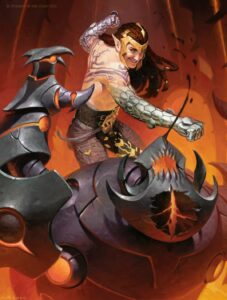
Tyvar, Jubilant Brawler, illustrated by Victor Adame Minguez
What Is Oathbreaker, Really?
Oathbreaker functions much like Commander in some ways. You may only have one copy of each nonbasic card in your deck. Just as well, you do have a legend in your command zone, but it must be a planeswalker unless otherwise stated on the card, such as format outlier Shorikai, Genesis Engine. Also, instead of being called your commander, it’s called your Oathbreaker. Additionally, you also have a signature spell that functions quite similarly to your Oathbreaker, which is required to be an instant or sorcery and requires your Oathbreaker to be in play in order to cast. This signature spell must be within the color identity of your Oathbreaker, and has a separately tracked tax for each time it is cast, also like your Oathbreaker. For instance, if you were playing Koth, Fire of Resistance alongside Lightning Bolt and had cast the former once, Lightning Bolt would still be just 1 mana the first time you cast it, and you couldn’t cast it at all if Koth wasn’t on the battlefield.
However, the format isn’t just Commander with a bonus card, as there are many other changes. The starting deck size is 60, the starting life total is 20, and the ban list is completely different. Commander staple Sol Ring, among a handful of other cards, are banned to increase balance in the earlier turns of the game. The full ban list can be found here. Only one planeswalker is banned in the format, and it’s Saheeli, the Gifted, which was featured in another Commander Corner installment, not long ago at the head of my favorite deck. I’m not bitter about it. Well, not that bitter. Partner Oathbreakers also have unique rules, all of which can be found through the official Oathbreaker website. Whew, that sure is a lot of rules baggage. Don’t worry though, we’re getting into the actual gameplay and deck construction portion next.
What Should I Be Playing?
While the answer to that question is and always will be the same (whatever you want), there are some clear guidelines you can follow to make your Oathbreaker experience more fun. Since most players will have planeswalkers as their Oathbreakers, good attackers and blockers are at a bigger premium than ever. Additionally, the presence of Signature Spells does a lot to increase the consistency and combo potential of certain decks, especially when combined with the smaller deck size compared to Commander. This doesn’t mean every deck needs to be Narset, Parter of Veils churning out Windfall or Professor Onyx plus Chain of Smog, but it does mean you’ll need you consider an assertive and coherent strategy.
Since your Signature Spell only works with your Oathbreaker in play, special consideration should usually be given to what your Oathbreaker does and how this interacts with your Signature Spell. Usually this means you want your Signature Spell to feed your Oathbreaker abilities, or the other way around. We’ll get into an example shortly. For now, remember this can be a fairly strong format, and some decks will be finely tuned at certain tables. By the very nature of having persistent access to the same powerful cards in your command zone every game, the format is possibly more consistent and powerful than you might think. Although stronger decks can pop up, the format is meant to be casual, so the ultimate goal should be to have fun.
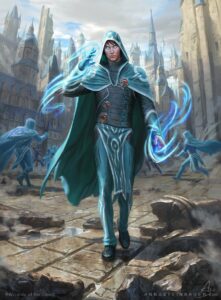
Jace, Wielder of Mysteries, illustrated by Anna Steinbauer
An Example Deck
While there are quite a few incredibly powerful decks that would no doubt leave others in the dust at casual tables, I think a measured approach to deckbuilding is the best way to approach this format. This deck represents one of the synergistic decks I mentioned earlier, where your Oathbreaker and Signature Spell work together.
Oathbreaker & Signature Spell
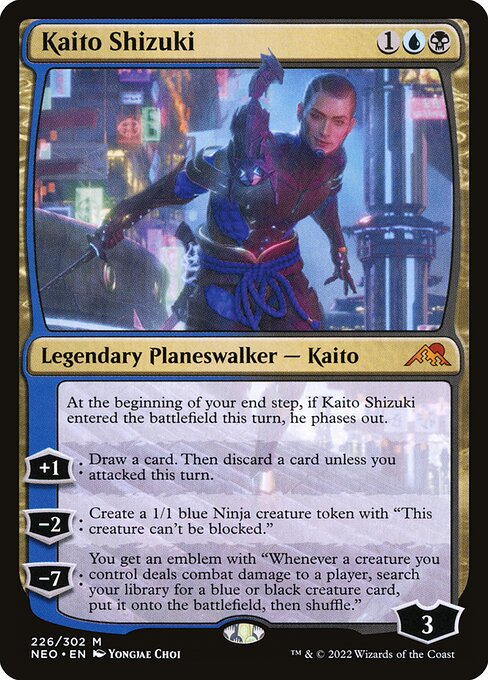
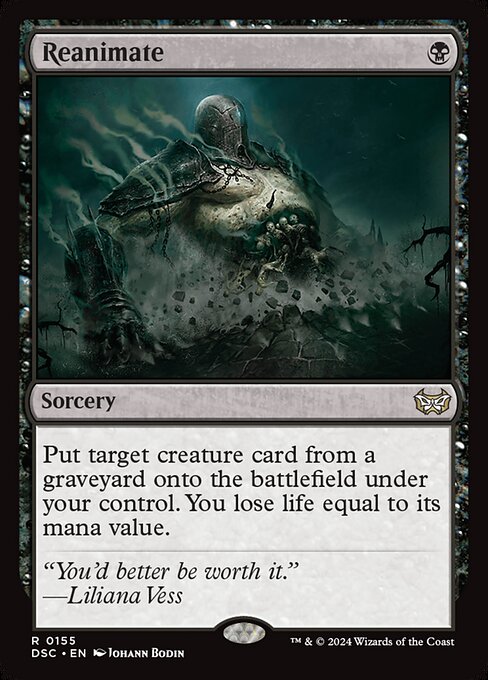
Creature – 16
Sheoldred, Whispering One, Nezahal, Primal Tide, Void Winnower, Sire of Stagnation, Rune-Scarred Demon, Merfolk Looter, Jace, Vryn’s Prodigy, Looter il-Kor, Shakedown Heavy, Baleful Strix, Fallen Shinobi, Changeling Outcast, Triton Shorestalker, Liliana, Heretical Healer, Hex Parasite, Vampire Hexmage
Artifact – 3
Arcane Signet, Dimir Signet, Talisman of Dominance
Enchantment – 5
Animate Dead, Mystic Remora, Propaganda, The Eldest Reborn, Teferi’s Ageless Insight
Instant – 10
Miscast, Force Spike, Delay, Remand, Silumgar’s Command, Wash Away, Soul Shatter, Sheoldred’s Edict, Counterspell, Daze
Sorcery – 1
Yawgmoth’s Vile Offering
Land – 23
7 Island, 7 Swamp, Command Tower, Choked Estuary, Tainted Isle, Creeping Tar Pit, Clearwater Pathway, Darkslick Shores, Drowned Catacomb, Shipwreck Marsh, Sunken Hollow
That’s one of the many kinds of decks you might see in an Oathbreaker game. There’s a clear focus and powerful dynamic between Kaito Shizuki and Reanimate, and a solid suite of beefy creatures to support that dynamic. Additionally, the non-creature slots are filled with all manner of outstanding removal and premier counterspells. You could bring this list to many casual tables and have a great time.
Format Meta
Right now there’s not a whole lot of data surrounding the actual metagame of Oathbreaker. Much like Commander, the meta is also quite dependent on the players you’re actually playing with rather than trends across the entire player base. However, with the help of the Oathbreaker team I’ve actually compiled a short list of some of the most common noncreature spells in the format: The Elderspell, Jeska’s Will, Tasha’s Hideous Laughter, Thoughtcast, Crop Rotation, Enlightened Tutor, and a handful of others. Some of the top Oathbreakers include Nicol Bolas, Dragon-God, Saheeli, Sublime Artificer, Grist, the Hunger Tide, Tamiyo, Field Researcher, and Nissa, Who Shakes the World. There’s a lot of room for innovation, a lot of hidden gems, and plenty of fun to be had at every level of power.
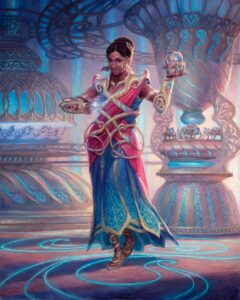
Saheeli, the Gifted, Illustration by Ryan Pancoast.
Youth Outreach Program & Future Of The Format
Many people don’t know that the Oathbreaker team, Weirdcards, has been persistently involved in a youth outreach program called MagiKids, a nonprofit dedicated to getting Magic cards to children across the United States. The Oathbreaker team has been dedicated to cultivating a grassroots community, and they’ve done a fantastic job. Now that the format is growing at an unprecedented rate, it’s only fair we give back some of that enjoyment and happiness, so check out their donation link to get involved! Right now, Moxfield, Archidekt, and TappedOut are some of the websites where you can find and create Oathbreaker decklists. I encourage you to experiment and have fun, because so far I’ve found it to be a blast. I’ve been Luka “Robot” Sharaska, and this has been the Commander Corner!
Luka V. Sharaska (they/them) earned the nickname “Robot” by having a monotone voice, a talent for calculating odds, and a perfect poker face. Robot has been playing Magic for more than a decade, starting during the days of New Phyrexia in 2011.

